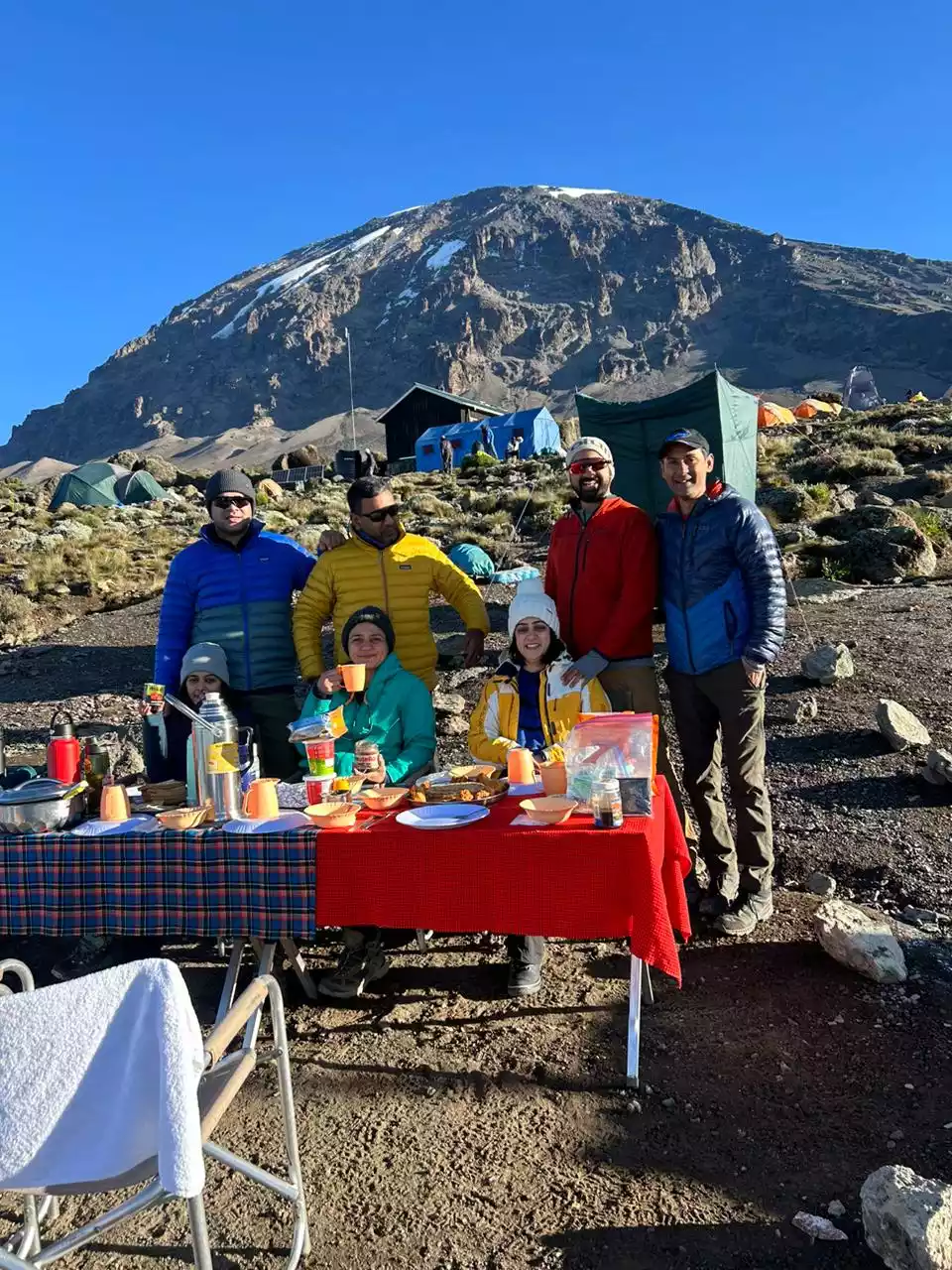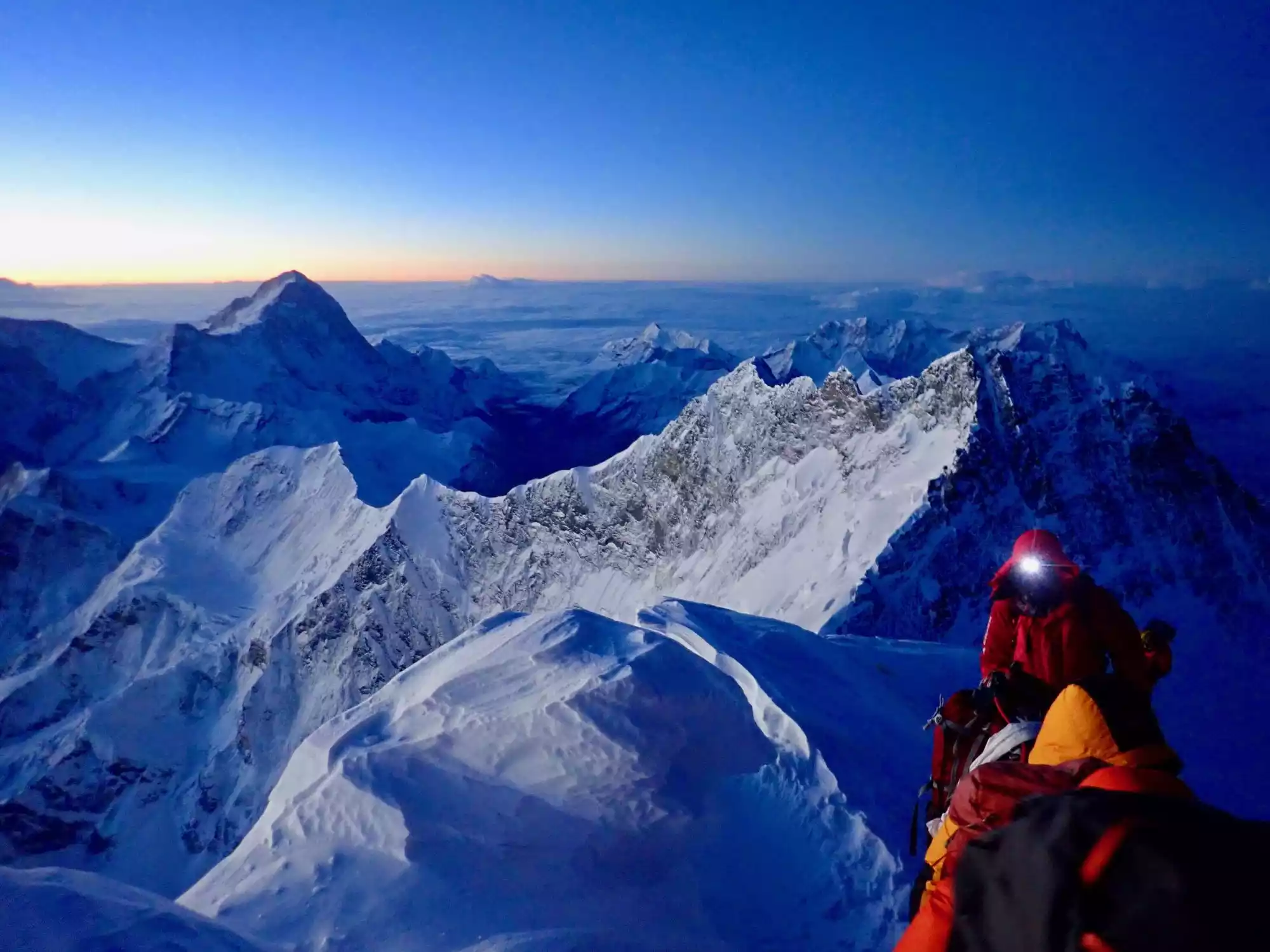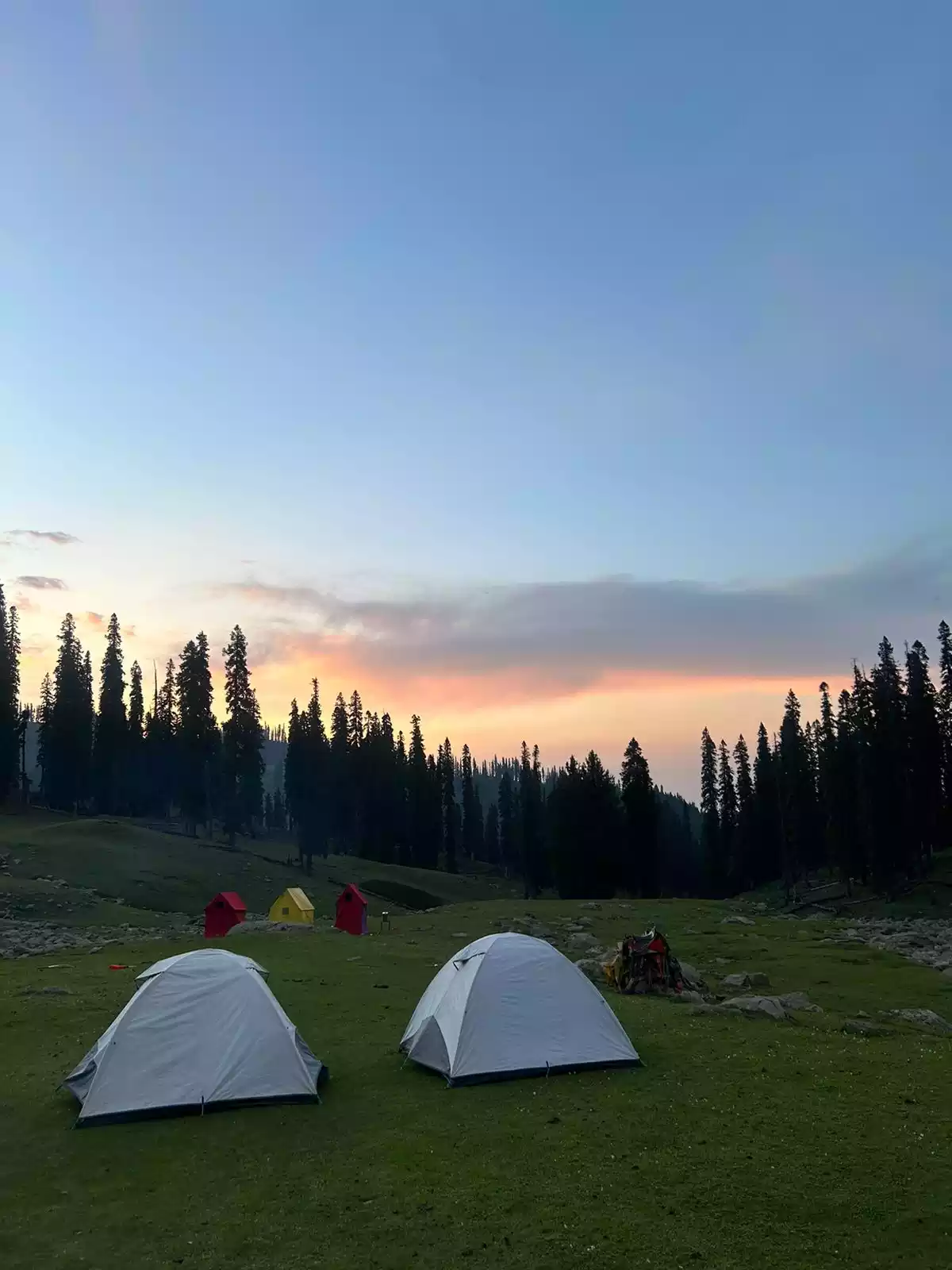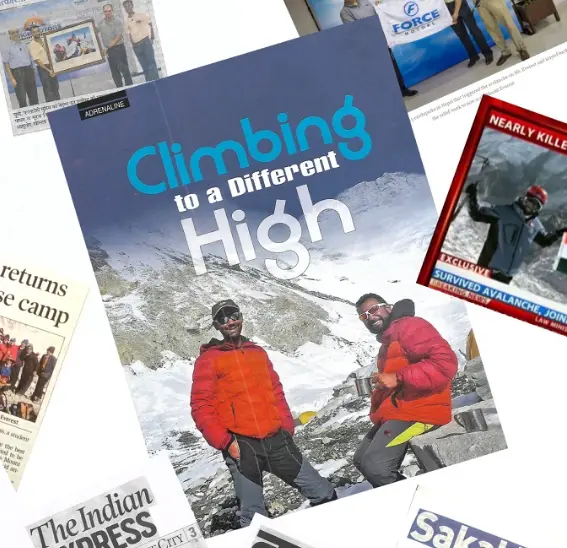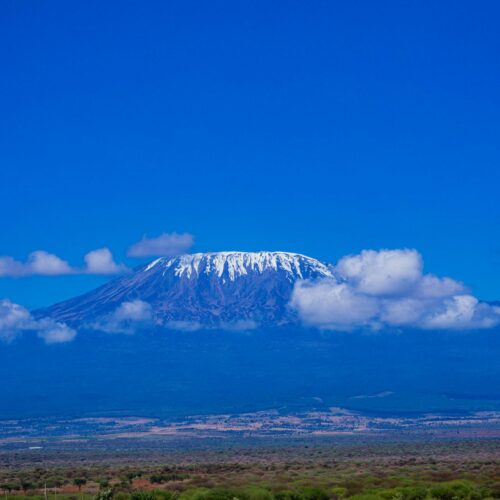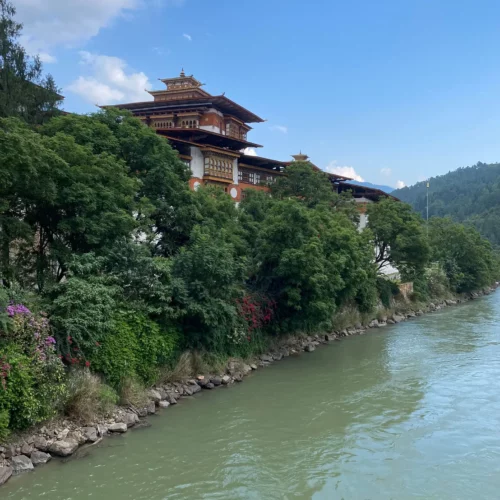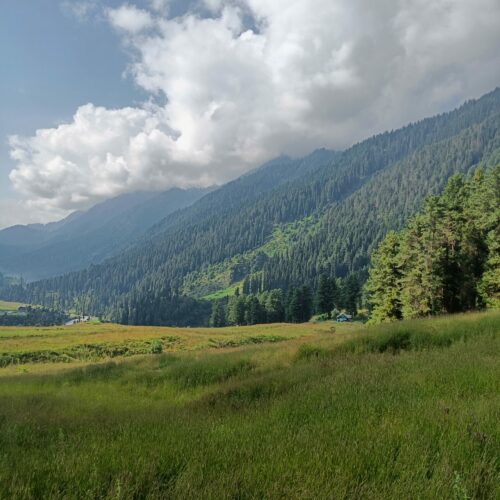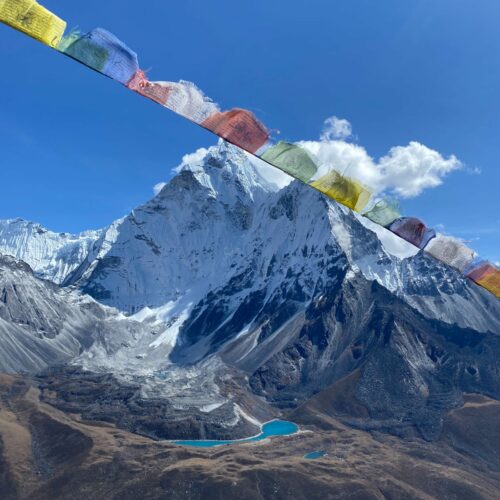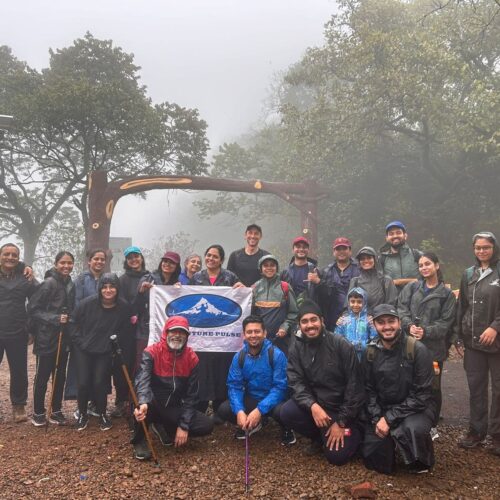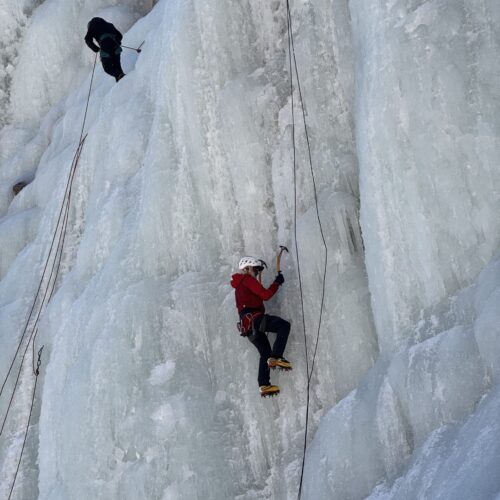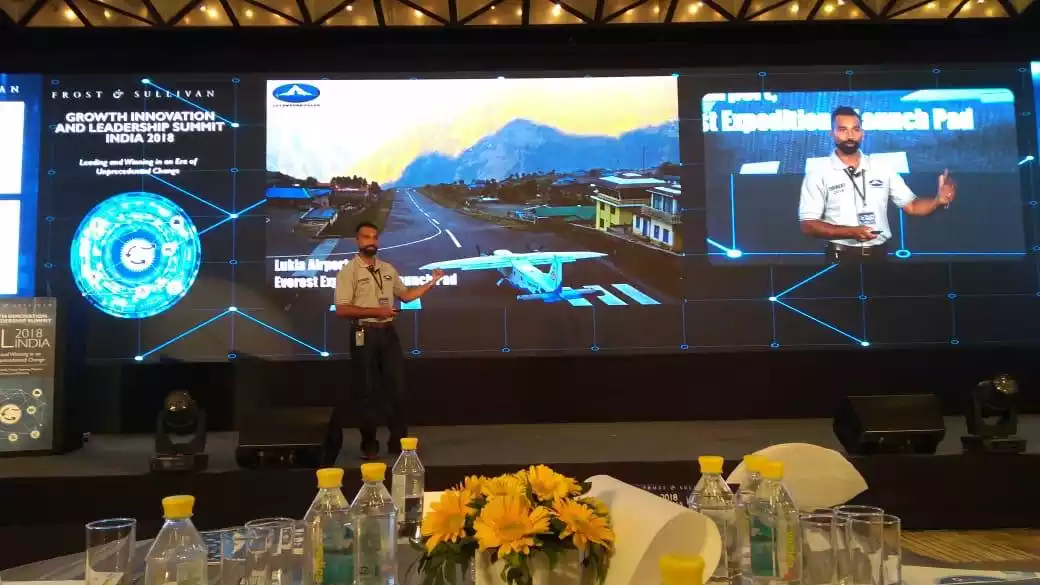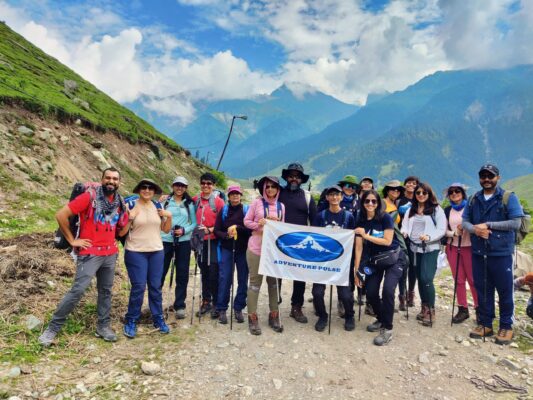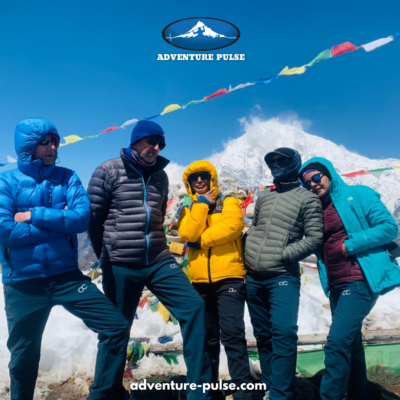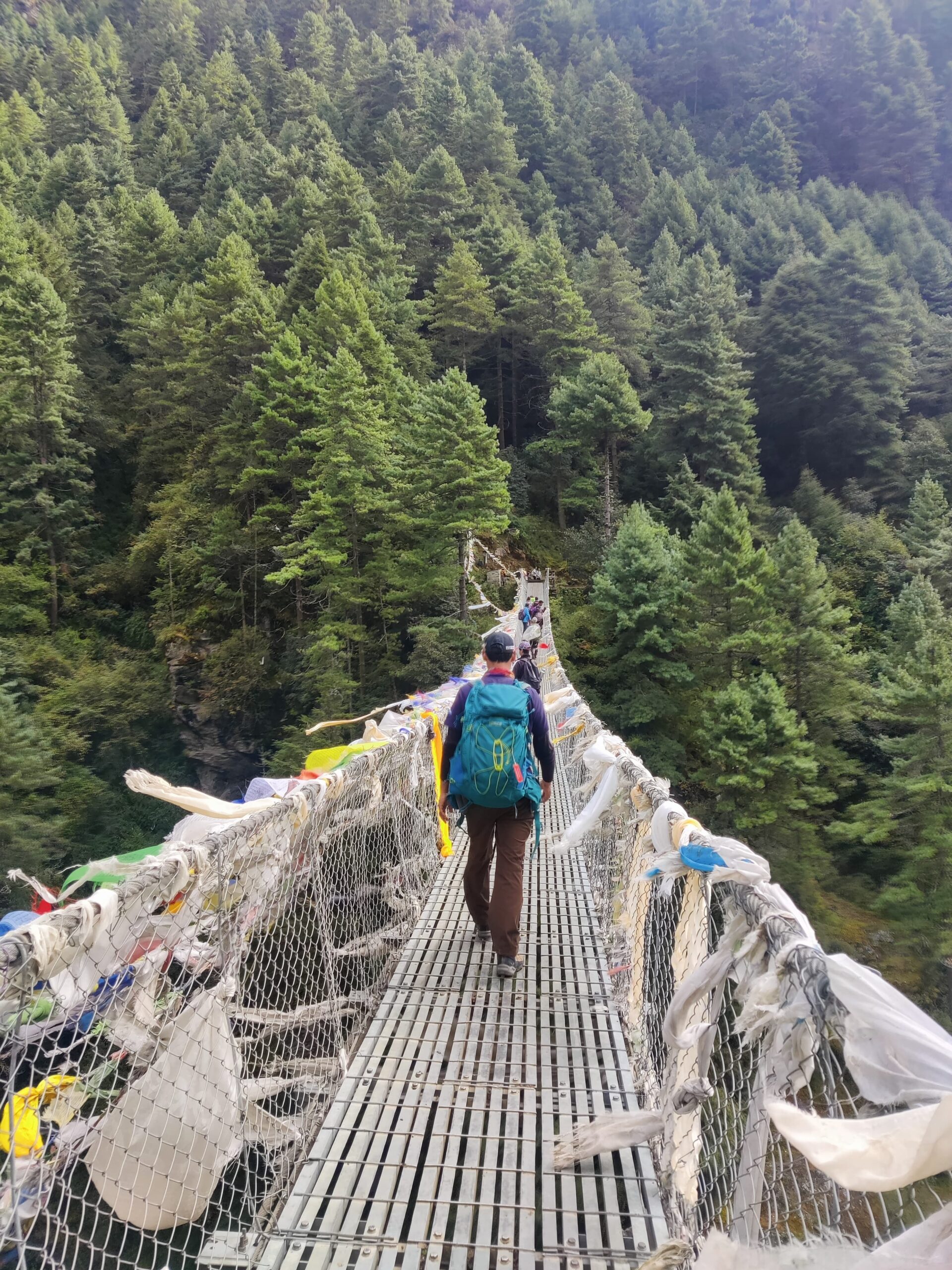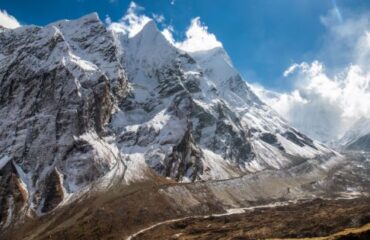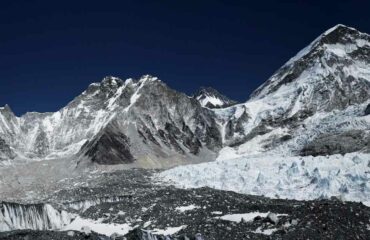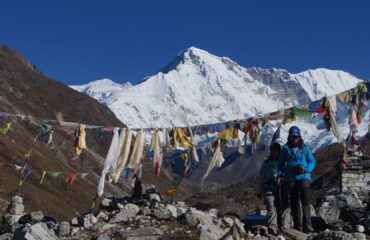
In Part 1 of the Everest Base Camp versus Annapurna Base Camp series, we explored key guidelines and general factors to help you decide which trek may suit you better. In this section, we’ll dive deeper into important considerations that highlight how these two iconic treks differ. While both Everest Base Camp and Annapurna Base Camp offer stunning scenery and unforgettable experiences, understanding the practical realities of each trek will help you make a more informed decision and ensure a more enjoyable journey in the mountains.
Let’s dive in further..
Differences Between the Terrain, Experience, and Culture
Everest Base Camp Trek
The terrain on the Everest Base Camp Trek is rugged, remote, and physically demanding. Trekkers face steep ascents, rocky trails, and glacial moraines. The route climbs to a high altitude of 5,364 meters, increasing the risk of altitude sickness. Along the trail, trekkers cross suspension bridges like the Hillary Bridge and navigate snow-covered paths near higher elevations. The region remains less developed with fewer villages and teahouses, creating a stronger sense of isolation. Harsh weather conditions include colder temperatures, strong winds, and unpredictable storms, especially in winter and monsoon seasons. This environment suits trekkers looking for a remote and challenging high-altitude journey.
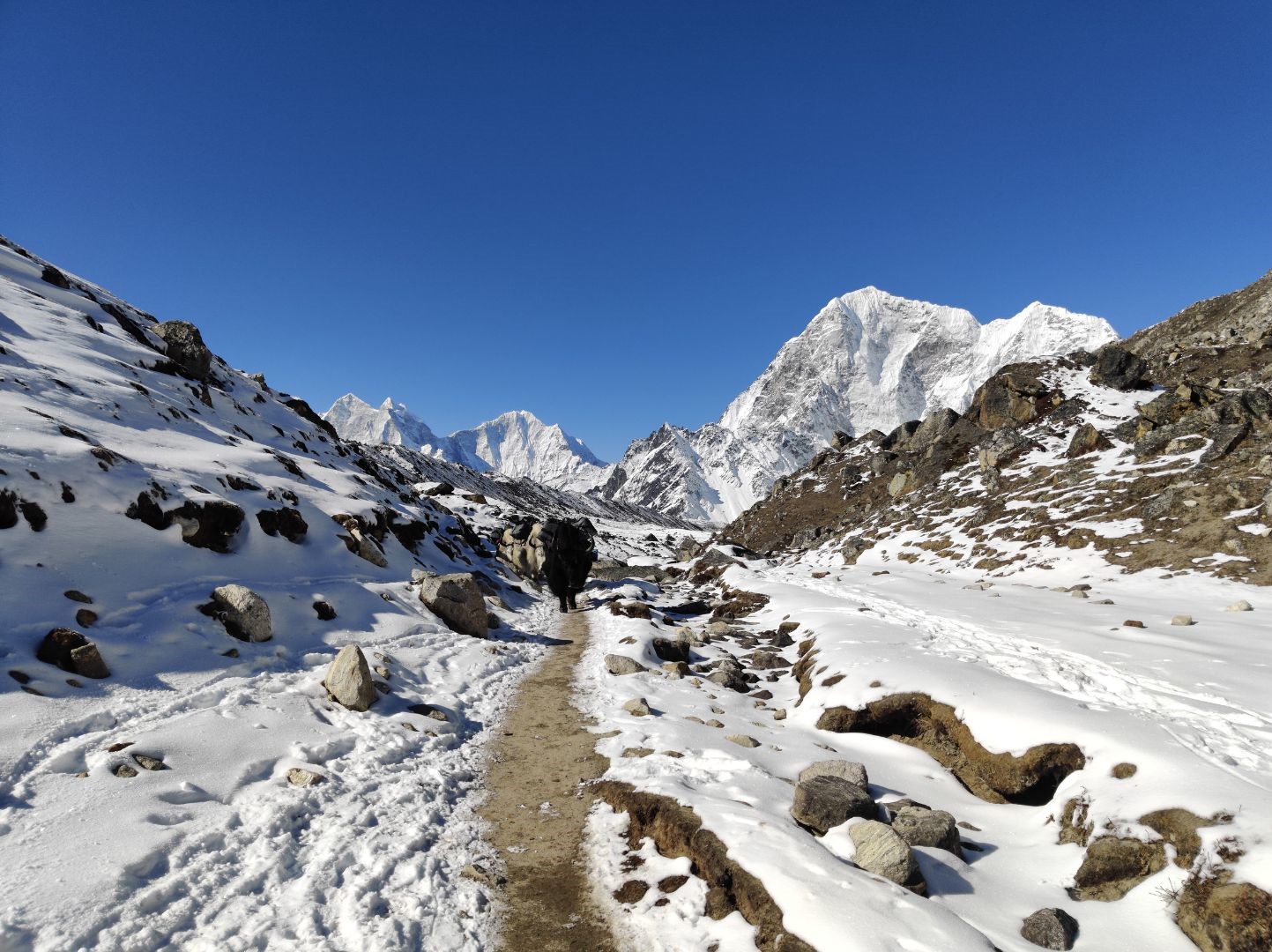
everest base camp trek abc trek vs ebc camp
Everest Base Camp trek challenges both the body and the mind. Trekkers need strong physical fitness and mental endurance to complete it. The route rewards effort with majestic views of Everest, Lhotse, and Nuptse. The entire journey takes around 12 to 14 days and demands careful acclimatization. Fewer facilities and limited access enhance the feeling of adventure and solitude. This trek best suits experienced trekkers ready to push their limits and achieve something remarkable.
Trekkers also immerse themselves in Sherpa culture throughout the trek. The region reflects deep Tibetan Buddhist influences. Visitors encounter prayer flags, mani stones, and chortens along the trail. Historic monasteries like Tengboche Monastery give insight into Sherpa spiritual life. The trail mostly runs through Sherpa communities, offering fewer encounters with other ethnic groups. This cultural experience suits those interested in Buddhism and Sherpa traditions in the high Himalayas.
Annapurna Base Camp Trek
Annapurna Base Camp Trek features varied terrain including rhododendron forests, terraced farms, river valleys, and alpine meadows. The maximum elevation is 4,130 meters, significantly lower than EBC, which lowers the risk of altitude-related issues. Trails are well-maintained and include more gradual ascents and descents. The gentler terrain makes this trek accessible to beginners and those with moderate fitness levels. Trekkers pass through many villages and teahouses, allowing more frequent rest and comfort. The weather is milder, with warmer temperatures and fewer harsh conditions, especially outside winter months.
This trek offers a balanced mix of comfort and adventure. It welcomes both first-time trekkers and those looking for a moderate challenge. The route provides breathtaking views of Annapurna I, Machapuchare, and Hiunchuli. Trekkers usually complete the journey in 7 to 10 days, making it a great option for shorter trips. Along the way, they enjoy a more social atmosphere with chances to meet locals and fellow travelers. This trek suits those seeking a rewarding adventure without extreme physical demands.
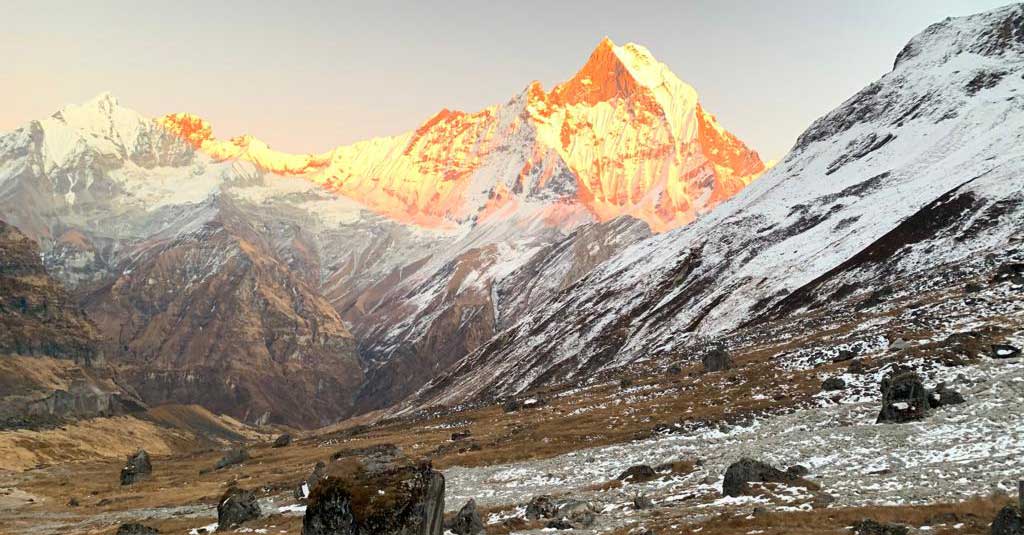
Annapurna-Base-Camp
The journey to Annapurna Basse camp also offers rich and diverse cultural experiences. Trekkers visit villages inhabited by Gurung and Magar communities. These groups are known for their warmth and strong cultural identity. The region blends Hindu and Buddhist practices, reflected in local shrines and traditions. Trekkers observe a variety of rituals, festivals, and lifestyles along the way. The cultural diversity makes this trek ideal for travelers who want to explore different traditions while enjoying the natural beauty of the Himalayas.
Accommodation on Everest Base Camp Trek
Accommodation on the Everest Base Camp Trek ranks among the best high-altitude lodging options available in Nepal. The Khumbu Valley uses a tea house system, where trekkers stay in wooden and stone lodges instead of setting up tents. These tea houses are operated by local families, mainly from the Sherpa community. They offer a comfortable and culturally rich stay throughout the trek.
In fact, the Everest Base Camp route features some of the most luxurious options in Nepal’s trekking regions. These include well-appointed tea houses with twin-sharing rooms and, in some cases, attached bathrooms. High-end lodges like Yeti Mountain Home and Everest View Hotel also offer luxury comparable to five-star facilities.
All tea houses provide basic amenities such as beds, mattresses, pillows, and blankets. Some even offer heated blankets, enhancing comfort at high altitudes.
Accommodation on Annapurna Base Camp Trek
Accommodation in the Annapurna region is similar in style to the Everest Base Camp Trek but more basic in quality. The Annapurna Base Camp trek also uses tea houses or mountain lodges, though they are fewer in number. This region is less commercialized, so options are limited compared to the Everest trail.
Most tea houses on this route offer dorm-style accommodation. Rooms are usually shared by three to six people, with single or bunk beds. These tea houses generally have common bathrooms, and attached bathrooms are rare.
Facilities are simple and functional, not luxurious. Trekkers should be mentally prepared for basic lodging and limited comfort in the Annapurna region.
Highlights of the journey –
Everest Base Camp:
- Everest Base Camp trek showcases stunning views of some of the world’s tallest peaks. Trekkers witness Mount Everest, Lhotse, Nuptse, Ama Dablam, and Thamserku along the trail. One of the trek’s most iconic moments happens at Kala Patthar.
- The trail leads trekkers through traditional Sherpa villages and reveals their rich cultural heritage. Namche Bazaar, the region’s largest Sherpa settlement, acts as a lively acclimatization stop. Trekkers explore its bustling markets, shops, and monasteries during their stay. Tengboche Monastery stands out as a cultural and scenic highlight of the trek.
- Trekkers experience the dramatic beauty of the Khumbu Glacier. This massive glacier leads directly to Everest Base Camp. Its icy landscape features deep crevasses and sculpted formations that feel otherworldly. From base camp, trekkers can see the Khumbu Icefall, known for its deadly reputation among climbers.
- Everest Base Camp trek rises above 5,000 meters, where oxygen levels drop and altitude becomes a challenge. Trekkers must take acclimatization days to avoid altitude sickness.
- Along the way, teams cross suspension bridges over deep gorges, including the iconic Hillary Bridge. The terrain becomes rockier and more barren as elevation increases.
- Snow often covers the path near base camp, adding to the challenge. This trek demands strong physical fitness and mental endurance due to extreme altitude and cold.
Annapurna Base Camp:
- Unlike Everest’s rugged, barren terrain, the Annapurna Base Camp trek leads trekkers through lush forests, waterfalls, and terraced fields. The lower sections stay green and vibrant, filled with rhododendron forests and cascading streams.
- As trekkers ascend, the landscape slowly transforms into alpine meadows and snowy ridges. A particularly scenic stretch lies between Deurali and Machapuchare Base Camp. This section features towering snow-covered peaks that surround trekkers on all sides.
- Up-close encounter with the Annapurna Massif’s immense beauty. Annapurna Base Camp places trekkers at the heart of the mountains. Annapurna I, Machapuchare, Hiunchuli, and Annapurna South form a natural amphitheater.
- The trek introduces trekkers to the cultural richness of the Gurung and Magar communities. Villages like Chhomrong, Ghandruk, and Landruk offer cultural immersion and warm hospitality. Trekkers interact with locals, watch traditional dances, and enjoy authentic Nepali meals.
- The trek to Annapurna Base Camp includes a relaxing bonus—Jhinu Danda Hot Springs. After long days of hiking, many trekkers detour to soak in the warm, natural pools. Locals believe these thermal springs have healing qualities.
Physical Preparation Needed for Everest Base Camp Trek
Everest Base Camp Trek demands significant physical effort due to its altitude, duration, and steep climbs and descents. Proper preparation ensures a safer, more enjoyable trekking experience. Trekkers should begin training 3 to 6 months in advance to build stamina and endurance. Cardiovascular fitness is vital because trekkers walk 5 to 8 hours daily at high elevations. Running, swimming, cycling, or stair climbing help improve lung capacity and boost overall endurance.
Building strength is also important, especially for the legs and core. Exercises like squats, lunges, and leg presses strengthen muscles for tough hikes. Core workouts help with balance and stability, particularly on uneven terrain. Carrying a daypack is part of the trek, so shoulder and back training is useful. Altitude acclimatization poses a major challenge, but high-altitude training isn’t always an option. Instead, trekkers can simulate conditions by hiking with a weighted backpack in hilly areas.
Flexibility and balance training, like yoga and stretching, help prevent injuries and improve mobility on the trail. Mental readiness matters too—trekkers face fatigue, cold weather, and unpredictable paths. Staying hydrated, eating a proper diet, and ascending gradually with rest days prevent altitude sickness. Anyone with a medical condition should consult a doctor before attempting this trek.
Annapurna Base Camp Trek
Even though the Annapurna Base Camp trek is easier than Everest Base Camp, it still requires good physical preparation. Trekkers walk 5 to 7 hours daily on uneven paths with occasional steep climbs. Starting training 2 to 4 months in advance is recommended. Cardio exercises like walking, jogging, swimming, or biking help increase endurance and lung capacity. The trail rises gradually, so altitude sickness is less likely, but fitness still helps with adjustment.
Leg strength is essential due to many stone staircases, especially near Chhomrong and Bamboo. Workouts like squats, lunges, and step-ups build strong legs for uphill climbs. Planks and crunches improve core strength and stability while carrying a backpack. Strengthening knees and improving joint flexibility helps with steep descents. Trekkers should train their quads and hamstrings and include stretches to reduce strain. Practicing hikes with a loaded pack on uneven terrain boosts readiness for conditions on the trail. Though altitude risks are lower than in Everest, proper hydration, nutrition, and pacing remain important throughout the Annapurna Base Camp trek.
FAQ Section for Annapurna Base Camp vs. Everest Base Camp Nepal Treks
1. What are the main differences between the Annapurna Base Camp (ABC) and Everest Base Camp (EBC) treks?
The ABC trek is shorter (7-12 days) and reaches a lower altitude (4,130m), making it more beginner-friendly with diverse landscapes like forests and villages. The EBC trek is longer (10-14 days), reaches a higher altitude (5,364m), and involves more challenging terrain with iconic views of Mount Everest. ABC is accessed via a drive from Pokhara, while EBC requires a flight to Lukla.
2. Which trek is better for first-time trekkers?
The ABC trek is generally recommended for first-time trekkers due to its lower altitude, shorter duration, and less demanding acclimatization requirements. However, fit beginners with proper preparation can manage EBC if they prioritize the allure of Everest.
3. How do the costs of ABC and EBC treks compare?
ABC is typically more budget-friendly due to its shorter duration and no domestic flight requirement. EBC tends to be costlier because of the longer trek, the flight to Lukla, and higher-altitude logistics. Exact costs vary based on group size, guides, and season, but EBC often requires a higher budget.
4. What are the best seasons for trekking ABC and EBC?
Both treks are best in spring (March-May) and autumn (September-November) for clear skies, stable weather, and optimal views. Winter treks are possible for ABC but riskier due to avalanches, while EBC is tougher in winter due to cold and snow.
5. How physically demanding are these treks?
ABC is moderately challenging with steep ascents and many stairs but lower altitude reduces altitude sickness risk. EBC is more demanding due to higher altitude (5,364m), longer duration, and rugged terrain, requiring better fitness and acclimatization
6. What cultural experiences can I expect on these treks?
ABC offers exposure to diverse ethnic groups like Gurungs, Magars, and Thakalis, with vibrant village life. EBC immerses you in Sherpa culture, including Buddhist monasteries and traditions in places like Namche Bazaar. Both provide rich cultural insights but differ in community focus.
7. Are permits required for ABC and EBC treks?
Yes, ABC requires an Annapurna Conservation Area Permit (ACAP) and a TIMS card. EBC requires a Sagarmatha National Park Entry Permit and a Khumbu Pasang Lhamu Rural Municipality Entry Permit. Permits are obtained in Kathmandu or Pokhara, often through trekking agencies.
8. What are the risks associated with these treks?
ABC has avalanche risks in areas like Hinku Cave to Deurali, especially after heavy snowfall. EBC poses higher risks of altitude sickness due to its elevation. Both require preparation for unpredictable Himalayan weather and proper gear.
9. Can I do these treks without a guide?
While both trails are well-marked, hiring a guide is recommended for safety, navigation, and cultural insights. Guides are especially crucial for EBC due to altitude risks and for ABC during peak seasons when teahouses fill up quickly.
10. Which trek offers better scenery?
This is subjective. ABC provides an amphitheater of peaks like Annapurna I, Dhaulagiri, and Machhapuchhre, with lush forests. EBC offers dramatic views of Everest, Lhotse, and Ama Dablam, with rugged alpine landscapes. Your preference for diverse terrain (ABC) or iconic peaks (EBC) will decide.
Parting Thoughts
Both the Everest Base Camp and Annapurna Base Camp treks offer unforgettable Himalayan experiences, but they differ significantly in terms of terrain, physical demands, journey highlights, and accommodation. The Everest Base Camp trek is ideal for those seeking a high-altitude challenge with rugged landscapes, iconic mountain views, and relatively more developed trekking infrastructure, including well-equipped tea houses and even luxury stays. It demands greater physical preparation due to the altitude and terrain, making it best suited for experienced or well-prepared trekkers.
On the other hand, the Annapurna Base Camp trek provides a more moderate adventure through lush forests, terraced farmlands, and diverse cultural villages. While accommodation is more basic and communal, the trek is shorter, involves a gentler ascent, and is better suited for beginners or those seeking a less strenuous but still scenic and culturally rich experience.
Ultimately, your choice depends on your fitness level, trekking experience, and the kind of adventure you’re looking for—whether it’s the raw, high-altitude thrill of Everest or the diverse, accessible beauty of Annapurna. Either way, both treks promise a deeply rewarding journey in the heart of the Himalayas.
Follow us on Social Media – LinkedIn | TripAdvisor | Instagram

